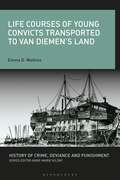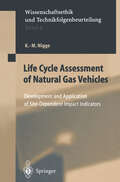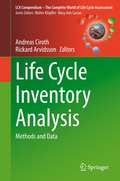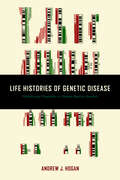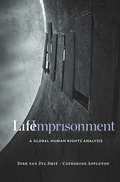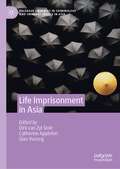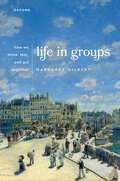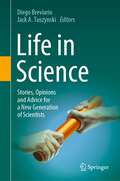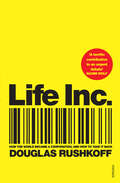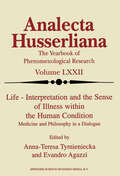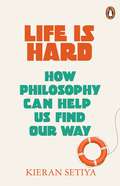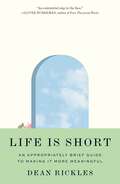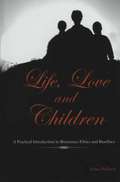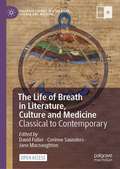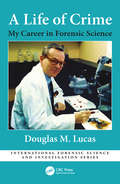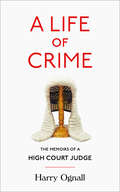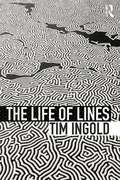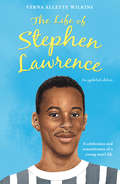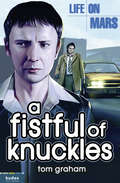- Table View
- List View
Life Courses of Young Convicts Transported to Van Diemen's Land (History of Crime, Deviance and Punishment)
by Emma D. WatkinsDrawing on digital criminal records, this book traces the life courses of young convicts who were sentenced at the Old Bailey and transported to Van Diemen's Land in the early 19th century. It explores the everyday lives of the convicts pre- and post-transportation, focusing on their crimes, punishments, education, employment and family life right up to their deaths. Emma D. Watkins contextualizes these young convicts within the punishment system, economy and culture that they were thrust into by their forced movement to Australia. This allows an understanding of the factors which determined their chances of achieving a 'settled life' away from crime in the colony.Packed with case studies offering vivid accounts of the offenders' lives, Life Courses of Young Convicts Transported to Van Diemen's Land makes an important contribution to the history of transportation, social history and Australian history.
Life Courses of Young Convicts Transported to Van Diemen's Land (History of Crime, Deviance and Punishment)
by Emma D. WatkinsDrawing on digital criminal records, this book traces the life courses of young convicts who were sentenced at the Old Bailey and transported to Van Diemen's Land in the early 19th century. It explores the everyday lives of the convicts pre- and post-transportation, focusing on their crimes, punishments, education, employment and family life right up to their deaths. Emma D. Watkins contextualizes these young convicts within the punishment system, economy and culture that they were thrust into by their forced movement to Australia. This allows an understanding of the factors which determined their chances of achieving a 'settled life' away from crime in the colony.Packed with case studies offering vivid accounts of the offenders' lives, Life Courses of Young Convicts Transported to Van Diemen's Land makes an important contribution to the history of transportation, social history and Australian history.
Life Cycle Assessment of Natural Gas Vehicles: Development and Application of Site-Dependent Impact Indicators (Ethics of Science and Technology Assessment #6)
by K.-M. NiggeIn the context of conducting research on the consequences of scientific and tech nological advance, the Europaische Akademie is also concerned with the support of scientists in the doctoral or post-doctoral phase who are working on topics or methods within its research spectrum. The first dissertation supported by the Europaische Akademie is published in this volume of the book series "Wissen schaftsethik und Technikfolgenbeurteilung". One of the research areas of the Europaische Akademie is the scientific investi gation of environmental consequences of new technologies. Energy conversion and transportation are thereby considered as important areas of technological advance. The dissertation follows this thread by comparing the impacts of natural gas vehicles on human health and the environment with those of reference vehi cles fueled by petrol and Diesel. This question is addressed within the framework of Life Cycle Assessment, which is one important instrument of environmental Technology Assessment. Within this framework, a new method for the assessment of impacts on human health is developed and applied. In this way, the dissertation contributes to the methodological research of the Europaische Akademie in the field of Technology Assessment. The book is addressed to researchers in the fields of alternative fuels, Techno logy Assessment, and Life Cycle Assessment in particular. It may also be of inter est to decisionmakers and the wider public concerned with environmental impacts of energy conversion and transportation. It was written in English in order to be accessible to an international audience.
Life Cycle Inventory Analysis: Methods and Data (LCA Compendium – The Complete World of Life Cycle Assessment)
by Andreas Ciroth Rickard ArvidssonLife Cycle Inventory (LCI) Analysis is the second phase in the Life Cycle Assessment (LCA) framework. Since the first attempts to formalize life cycle assessment in the early 1970, life cycle inventory analysis has been a central part. Chapter 1 “Introduction to Life Cycle Inventory Analysis“ discusses the history of inventory analysis from the 1970s through SETAC and the ISO standard. In Chapter 2 “Principles of Life Cycle Inventory Modeling”, the general principles of setting up an LCI model and LCI analysis are described by introducing the core LCI model and extensions that allow addressing reality better. Chapter 3 “Development of Unit Process Datasets” shows that developing unit processes of high quality and transparency is not a trivial task, but is crucial for high-quality LCA studies. Chapter 4 “Multi-functionality in Life Cycle Inventory Analysis: Approaches and Solutions” describes how multi-functional processes can be identified. In Chapter 5 “Data Quality in Life Cycle Inventories”, the quality of data gathered and used in LCI analysis is discussed. State-of-the-art indicators to assess data quality in LCA are described and the fitness for purpose concept is introduced. Chapter 6 “Life Cycle Inventory Data and Databases“ follows up on the topic of LCI data and provides a state-of-the-art description of LCI databases. It describes differences between foreground and background data, recommendations for starting a database, data exchange and quality assurance concepts for databases, as well as the scientific basis of LCI databases. Chapter 7 “Algorithms of Life Cycle Inventory Analysis“ provides the mathematical models underpinning the LCI. Since Heijungs and Suh (2002), this is the first time that this aspect of LCA has been fundamentally presented. In Chapter 8 “Inventory Indicators in Life Cycle Assessment”, the use of LCI data to create aggregated environmental and resource indicators is described. Such indicators include the cumulative energy demand and various water use indicators. Chapter 9 “The Link Between Life Cycle Inventory Analysis and Life Cycle Impact Assessment” uses four examples to discuss the link between LCI analysis and LCIA. A clear and relevant link between these phases is crucial.
Life Histories of Genetic Disease: Patterns and Prevention in Postwar Medical Genetics
by Andrew J. HoganMedical geneticists began mapping the chromosomal infrastructure piece by piece in the 1970s by focusing on what was known about individual genetic disorders. Five decades later, their infrastructure had become an edifice for prevention, allowing today;€™s expecting parents to choose to test prenatally for hundreds of disease-specific mutations using powerful genetic testing platforms. In Life Histories of Genetic Disease, Andrew J. Hogan explores how various diseases were "made genetic" after 1960, with the long-term aim of treating and curing them using gene therapy. In the process, he explains, these disorders were located in the human genome and became targets for prenatal prevention, while the ongoing promise of gene therapy remained on the distant horizon.In narrating the history of research that contributed to diagnostic genetic medicine, Hogan describes the expanding scope of prenatal diagnosis and prevention. He draws on case studies of Prader-Willi, fragile X, DiGeorge, and velo-cardio-facial syndromes to illustrate that almost all testing in medical genetics is inseparable from the larger;¢;‚¬;€?and increasingly "big data";€“oriented;¢;‚¬;€?aims of biomedical research. Hogan also reveals how contemporary genetic testing infrastructure reflects an intense collaboration among cytogeneticists, molecular biologists, and doctors specializing in human malformation.Hogan critiques the modern ideology of genetic prevention, which suggests that all pregnancies are at risk for genetic disease and should be subject to extensive genomic screening. He examines the dilemmas and ethics of the use of prenatal diagnostic information in an era when medical geneticists and biotechnology companies have begun offering whole genome prenatal screening;¢;‚¬;€?essentially searching for any disease-causing mutation. Hogan;€™s focus and analysis is animated by ongoing scientific and scholarly debates about the extent to which the preventive focus in contemporary medical genetics resembles the aims of earlier eugenicists. Written for historians, sociologists, and anthropologists of science and medicine, as well as bioethics scholars, physicians, geneticists, and families affected by genetic conditions, Life Histories of Genetic Disease is a profound exploration of the scientific culture surrounding malformation and mutation.
Life Histories of Genetic Disease: Patterns and Prevention in Postwar Medical Genetics
by Andrew J. HoganMedical geneticists began mapping the chromosomal infrastructure piece by piece in the 1970s by focusing on what was known about individual genetic disorders. Five decades later, their infrastructure had become an edifice for prevention, allowing today;€™s expecting parents to choose to test prenatally for hundreds of disease-specific mutations using powerful genetic testing platforms. In Life Histories of Genetic Disease, Andrew J. Hogan explores how various diseases were "made genetic" after 1960, with the long-term aim of treating and curing them using gene therapy. In the process, he explains, these disorders were located in the human genome and became targets for prenatal prevention, while the ongoing promise of gene therapy remained on the distant horizon.In narrating the history of research that contributed to diagnostic genetic medicine, Hogan describes the expanding scope of prenatal diagnosis and prevention. He draws on case studies of Prader-Willi, fragile X, DiGeorge, and velo-cardio-facial syndromes to illustrate that almost all testing in medical genetics is inseparable from the larger;¢;‚¬;€?and increasingly "big data";€“oriented;¢;‚¬;€?aims of biomedical research. Hogan also reveals how contemporary genetic testing infrastructure reflects an intense collaboration among cytogeneticists, molecular biologists, and doctors specializing in human malformation.Hogan critiques the modern ideology of genetic prevention, which suggests that all pregnancies are at risk for genetic disease and should be subject to extensive genomic screening. He examines the dilemmas and ethics of the use of prenatal diagnostic information in an era when medical geneticists and biotechnology companies have begun offering whole genome prenatal screening;¢;‚¬;€?essentially searching for any disease-causing mutation. Hogan;€™s focus and analysis is animated by ongoing scientific and scholarly debates about the extent to which the preventive focus in contemporary medical genetics resembles the aims of earlier eugenicists. Written for historians, sociologists, and anthropologists of science and medicine, as well as bioethics scholars, physicians, geneticists, and families affected by genetic conditions, Life Histories of Genetic Disease is a profound exploration of the scientific culture surrounding malformation and mutation.
Life Imprisonment: A Global Human Rights Analysis (Oñati International Series In Law And Society Ser.)
by Dirk van Zyl SmitLife imprisonment has replaced the death penalty as the most common sentence imposed for heinous crimes worldwide. Consequently, it has become the leading issue of international criminal justice reform. In the first survey of its kind, Dirk van Zyl Smit and Catherine Appleton argue for a human rights–based reappraisal of this harsh punishment.
Life Imprisonment in Asia (Palgrave Advances in Criminology and Criminal Justice in Asia)
by Dirk van Zyl Smit Catherine Appleton Giao VucongLife imprisonment is the punishment most often imposed worldwide for what societies regard as the most serious offences. Yet, in Asia the phenomenon has never been studied systematically. Life Imprisonment in Asia fills this major gap. It brings together thirteen new essays on life imprisonment in key jurisdictions in the region. Each chapter consolidates what is known about the law and practice of life imprisonment in the jurisdiction and then explores aspects of the imposition or implementation of life sentences that the authors regard as particularly problematic. In some instances, the main issue is the imposition of life sentences by the courts and their relationship to the death penalty. In others, the focus is on the treatment of life sentenced prisoners. In many instances, the most prominent question is whether life sentenced prisoners should be released and, if so, according to what processes. In the overview chapter, the editors place the complex picture that emerges of life imprisonment in Asia in a global context and point to reforms urgently required to ensure that Asian life sentences meet international human rights standards.Life Imprisonment in Asia should be read by everyone who has an interest in just punishments for serious offences, not only in Asia, but throughout the world. It will be an invaluable tool for lawyers, criminologists, policy makers and penal reform advocates in the region and beyond.
Life in Groups: How We Think, Feel, and Act Together
by Margaret GilbertLife in Groups: How We Think, Feel, and Act Together develops and applies the author's perspective on topics she relates to joint commitment. This kind of commitment unifies those who participate in it, guides their actions going forward, and determines their relations to one another in important ways. In particular, it grounds in each of the parties a set of rights and obligations of a central kind. This volume contains thirteen essays, together with a substantial introduction, which serves both to explain joint commitment for those unfamiliar with it and to advance discussion in light of some questions it has prompted, and a reflective conclusion. The essays range over collective beliefs and intentions; rational choice and collective preference; group lies and corporate misbehavior; remorse and other emotions in a group context; rights, obligations, and freedom.
Life in Groups: How We Think, Feel, and Act Together
by Margaret GilbertLife in Groups: How We Think, Feel, and Act Together develops and applies the author's perspective on topics she relates to joint commitment. This kind of commitment unifies those who participate in it, guides their actions going forward, and determines their relations to one another in important ways. In particular, it grounds in each of the parties a set of rights and obligations of a central kind. This volume contains thirteen essays, together with a substantial introduction, which serves both to explain joint commitment for those unfamiliar with it and to advance discussion in light of some questions it has prompted, and a reflective conclusion. The essays range over collective beliefs and intentions; rational choice and collective preference; group lies and corporate misbehavior; remorse and other emotions in a group context; rights, obligations, and freedom.
Life in Science: Stories, Opinions and Advice for a New Generation of Scientists
by Diego Breviario Jack A. TuszynskiThis book is a collection of stories, reflections and advice written by proficient scientists. They address the question of what doing science means to them, and describe attitudes and working practices that have proved effective and rewarding. The book is aimed in particular at young people who are attracted by science or already undertaking undergraduate studies, and who are considering making science their long-term profession. It will also be helpful and revealing to early-career scientists who are searching for their own best route to success. The book serves as a platform for experienced scientists to describe their original inclination, how that subjective disposition found its expression in their way of doing science, whether their expectations were met, and what achievements they can claim. But it is not restricted to success: contributors also share details of the limitations and failures they have encountered. Last but not least they describe how they see science now, how they think it will be in the near future, and what advice they would give to the their much younger colleagues. Readers will appreciate the diversity of the individual paths shaped by different education, motivation, ambition, inclination, intuition, feeling, belief and eligibility. At the same time the stories confirm that science relies on a translation of this subjective level into an objective level, one that is shared and accepted by the international scientific community, and whose results are produced with a commonly accepted and fully rational scientific method of investigation.
Life Inc: How the World Became a Corporation and How to Take it Back
by Douglas RushkoffDouglas Rushkoff was mugged outside his apartment on Christmas Eve, but when he posted a friendly warning on his community website, the responses castigated him for potentially harming the local real-estate market. When did these corporate values overtake civic responsibilites? Rushkoff examines how corporatism has become an intrinsic part of our everyday lives, choices and opinions. He demonstrates how this system created a world where everything can be commodified, where communities have dissolved into consumer groups, where fiction and reality have become fundamentally blurred. And, with this system on the verge of collapse, Rushkoff shows how the simple pleasures that make us human can also point the way to freedom.
Life Interpretation and the Sense of Illness within the Human Condition: Medicine and Philosophy in a Dialogue (Analecta Husserliana #72)
by Anna-Teresa Tymieniecka E. AgazziIn medicine the understanding and interpretation of the complex reality of illness currently refers either to an organismic approach that focuses on the physical or to a 'holistic' approach that takes into account the patient's human sociocultural involvement. Yet as the papers of this collection show, the suffering human person refers ultimately to his/her existential sphere. Hence, praxis is supplemented by still other perspectives for valuation and interpretation: ethical, spiritual, and religious. Can medicine ignore these considerations or push them to the side as being subjective and arbitrary? Phenomenology/philosophy-of-life recognizes all of the above approaches to be essential facets of the Human Condition (Tymieniecka). This approach holds that all the facets of the Human Condition have equal objectivity and legitimacy. It completes the accepted medical outlook and points the way toward a new `medical humanism'.
Life Is Hard: How Philosophy Can Help Us Find Our Way
by Kieran SetiyaA NEW YORKER AND THE ECONOMIST BEST BOOK OF 2022"Life Is Hard is a humane consolation for challenging times. Reading it is like speaking with a thoughtful friend who never tells you to cheer up, but, by offering gentle companionship and a change of perspective, makes you feel better anyway" The New York Times Book Review'An eloquent, moving, witty and above all useful demonstration of philosophy's power to help us weather the storms of being human' Oliver Burkeman, author of FOUR THOUSAND WEEKS______________________________________Pain, Loneliness, Grief, Injustice ... Hope?Life is hard - as the past few years have made painfully clear. From personal trauma to the injustice and absurdity of the world, sometimes simply going on can feel too much.But could there be solace - and even hope - in acknowledging the hardships of the human condition? Might doing so free us from the tyranny of striving for our "best lives" and help us find warmth, humanity, and humour in the lives we actually have? Could it inspire in us the desire for a better world?In this profound and personal book, Kieran Setiya shows how philosophy can help us find our way. He shares his own experience with chronic pain and the consolation that comes from making sense of it. He asks what we can learn from loneliness and loss about the value of human life. And he explores how we can fail with grace, confront injustice, and search for meaning in the face of despair. Drawing on ancient and modern philosophy, as well as fiction, comedy, social science and personal essay, Life is Hard is a book for this moment - a work of solace and compassion. It draws us towards justice, for ourselves and others, by acknowledging what it means to be alive.
Life Is Short: An Appropriately Brief Guide to Making It More Meaningful
by Dean RicklesWhy life’s shortness—more than anything else—is what makes it meaningfulDeath might seem to render pointless all our attempts to create a meaningful life. Doesn’t meaning require transcending death through an afterlife or in some other way? On the contrary, Dean Rickles argues, life without death would be like playing tennis without a net. Only constraints—and death is the ultimate constraint—make our actions meaningful. In Life Is Short, Rickles explains why the finiteness and shortness of life is the essence of its meaning—and how this insight is the key to making the most of the time we do have.Life Is Short explores how death limits our options and forces us to make choices that forge a life and give the world meaning. But people often live in a state of indecision, in a misguided attempt to keep their options open. This provisional way of living—always looking elsewhere, to the future, to other people, to other ways of being, and never committing to what one has or, alternatively, putting in the time and energy to achieve what one wants—is a big mistake, and Life Is Short tells readers how to avoid this trap.By reminding us how extraordinary it is that we have any time to live at all, Life Is Short challenges us to rethink what gives life meaning and how to make the most of it.
Life Is Short: An Appropriately Brief Guide to Making It More Meaningful
by Dean RicklesWhy life’s shortness—more than anything else—is what makes it meaningfulDeath might seem to render pointless all our attempts to create a meaningful life. Doesn’t meaning require transcending death through an afterlife or in some other way? On the contrary, Dean Rickles argues, life without death would be like playing tennis without a net. Only constraints—and death is the ultimate constraint—make our actions meaningful. In Life Is Short, Rickles explains why the finiteness and shortness of life is the essence of its meaning—and how this insight is the key to making the most of the time we do have.Life Is Short explores how death limits our options and forces us to make choices that forge a life and give the world meaning. But people often live in a state of indecision, in a misguided attempt to keep their options open. This provisional way of living—always looking elsewhere, to the future, to other people, to other ways of being, and never committing to what one has or, alternatively, putting in the time and energy to achieve what one wants—is a big mistake, and Life Is Short tells readers how to avoid this trap.By reminding us how extraordinary it is that we have any time to live at all, Life Is Short challenges us to rethink what gives life meaning and how to make the most of it.
Life, Love and Children: A Practical Introduction to Bioscience Ethics and Bioethics
by Irina PollardDiscussion of bioscience ethics requires understanding of the science that underpins biological systems impinging on our lives. Unencumbered by the formal structure of ethics, bioethics presents a forum for discussion of practical matters of individual and collective concern. This comprehensive text is a guide to the essentials of bioscience ethics and an interface between applied science and applied bioethics. Early chapters embrace topics affecting human reproduction – substance abuse and parenthood, aging gametes and congenital malformations, child abuse and its biological consequences. Intermediate chapters deal with end-of-life care and euthanasia, human fertility, assisted reproductive technologies, genetic engineering, and cloning. Remaining chapters challenge human-dominated ecosystems. Population growth, economic activity, and warfare – with its environmental consequences – are reviewed. A background section describes the evolution of ethical consciousness, explores the future, and proposes that the reworking of ethical boundaries can enhance mature decision-making in harmony with changing technology.
The Life of Breath in Literature, Culture and Medicine: Classical to Contemporary (Palgrave Studies in Literature, Science and Medicine)
by David Fuller Corinne Saunders Jane MacnaughtonThis open access book studies breath and breathing in literature and culture and provides crucial insights into the history of medicine, health and the emotions, the foundations of beliefs concerning body, spirit and world, the connections between breath and creativity and the phenomenology of breath and breathlessness. Contributions span the classical, medieval, early modern, Romantic, Victorian, modern and contemporary periods, drawing on medical writings, philosophy, theology and the visual arts as well as on literary, historical and cultural studies. The collection illustrates the complex significance and symbolic power of breath and breathlessness across time: breath is written deeply into ideas of nature, spirituality, emotion, creativity and being, and is inextricable from notions of consciousness, spirit, inspiration, voice, feeling, freedom and movement. The volume also demonstrates the long-standing connections between breath and place, politics and aesthetics, illuminating both contrasts and continuities.
A Life of Crime: My Career in Forensic Science (International Forensic Science and Investigation)
by Douglas LucasA Life of Crime: My Career in Forensic Science chronicles the career and experiences of world-renowned forensic scientist, Dr. Douglas Lucas. It is the culmination of his decades-worth of work in the field, developing innovative techniques that have revolutionized several aspects of forensic science. It is part professional reference, part career guide, part instructive reference for students wishing to entering the to enter the field, and wholly autobiographical. Dr. Lucas chronicles a number of the high-profile cases he’s worked on firsthand. This includes both the logistical problem-solving of case management—how to process and handle the evidence—in addition to the testing, analysis and processes he went through, and developed, along the way. Such cases include mass disaster plane crashes, arson, IEDs and explosives, poisonings, missing persons, and homicides, to name just a few. Dr. Lucas has encountered and seen just about everything a forensic professional can see. In addition to the in-depth discussion, development, and philosophy of forensic science as a discipline, the book also discusses the balance of personal and professional life. This is a vital, but little thought of aspect that becomes a conspicuous reality of working in the field: namely, delving into the science, and dealing with those personal emotions, work conflicts, and ethical conundrums that a professional regularly encounters. Forensic professionals, investigators, and students—regardless of background or discipline—will find this a fascinating look "behind the curtain" at one of the most decorated, innovative, and respected members of the field over the last 50 years.
A Life of Crime: My Career in Forensic Science (International Forensic Science and Investigation)
by Douglas LucasA Life of Crime: My Career in Forensic Science chronicles the career and experiences of world-renowned forensic scientist, Dr. Douglas Lucas. It is the culmination of his decades-worth of work in the field, developing innovative techniques that have revolutionized several aspects of forensic science. It is part professional reference, part career guide, part instructive reference for students wishing to entering the to enter the field, and wholly autobiographical. Dr. Lucas chronicles a number of the high-profile cases he’s worked on firsthand. This includes both the logistical problem-solving of case management—how to process and handle the evidence—in addition to the testing, analysis and processes he went through, and developed, along the way. Such cases include mass disaster plane crashes, arson, IEDs and explosives, poisonings, missing persons, and homicides, to name just a few. Dr. Lucas has encountered and seen just about everything a forensic professional can see. In addition to the in-depth discussion, development, and philosophy of forensic science as a discipline, the book also discusses the balance of personal and professional life. This is a vital, but little thought of aspect that becomes a conspicuous reality of working in the field: namely, delving into the science, and dealing with those personal emotions, work conflicts, and ethical conundrums that a professional regularly encounters. Forensic professionals, investigators, and students—regardless of background or discipline—will find this a fascinating look "behind the curtain" at one of the most decorated, innovative, and respected members of the field over the last 50 years.
A Life of Crime: Memoirs Of A High Court Judge
by Harry OgnallA frank and witty memoir of life at the Bar and on the Bench, from former High Court Judge The Hon. Sir Harry Ognall.
The Life Of Lines
by Anthony Barrett Tim IngoldTo live, every being must put out a line, and in life these lines tangle with one another. This book is a study of the life of lines. Following on from Tim Ingold's groundbreaking work Lines: A Brief History, it offers a wholly original series of meditations on life, ground, weather, walking, imagination and what it means to be human. In the first part, Ingold argues that a world of life is woven from knots, and not built from blocks as commonly thought. He shows how the principle of knotting underwrites both the way things join with one another, in walls, buildings and bodies, and the composition of the ground and the knowledge we find there. In the second part, Ingold argues that to study living lines, we must also study the weather. To complement a linealogy that asks what is common to walking, weaving, observing, singing, storytelling and writing, he develops a meteorology that seeks the common denominator of breath, time, mood, sound, memory, colour and the sky. This denominator is the atmosphere. In the third part, Ingold carries the line into the domain of human life. He shows that for life to continue, the things we do must be framed within the lives we undergo. In continually answering to one another, these lives enact a principle of correspondence that is fundamentally social. This compelling volume brings our thinking about the material world refreshingly back to life. While anchored in anthropology, the book ranges widely over an interdisciplinary terrain that includes philosophy, geography, sociology, art and architecture.
The Life Of Lines (PDF)
by Anthony Barrett Tim IngoldTo live, every being must put out a line, and in life these lines tangle with one another. This book is a study of the life of lines. Following on from Tim Ingold's groundbreaking work Lines: A Brief History, it offers a wholly original series of meditations on life, ground, weather, walking, imagination and what it means to be human. In the first part, Ingold argues that a world of life is woven from knots, and not built from blocks as commonly thought. He shows how the principle of knotting underwrites both the way things join with one another, in walls, buildings and bodies, and the composition of the ground and the knowledge we find there. In the second part, Ingold argues that to study living lines, we must also study the weather. To complement a linealogy that asks what is common to walking, weaving, observing, singing, storytelling and writing, he develops a meteorology that seeks the common denominator of breath, time, mood, sound, memory, colour and the sky. This denominator is the atmosphere. In the third part, Ingold carries the line into the domain of human life. He shows that for life to continue, the things we do must be framed within the lives we undergo. In continually answering to one another, these lives enact a principle of correspondence that is fundamentally social. This compelling volume brings our thinking about the material world refreshingly back to life. While anchored in anthropology, the book ranges widely over an interdisciplinary terrain that includes philosophy, geography, sociology, art and architecture.
The Life of Stephen Lawrence
by Verna Allette WilkinsStephen Lawrence was a bright, athletic, young man with high hopes for the future. He lived in south-east London with his parents, younger brother and younger sister. On 22 April 1993, he was brutally murdered while he was waiting for the bus. He was eighteen years old. He didn't know his killers; his killers didn't know him.This is his story. He will be remembered.This paperback edition revised with added material about the trial, the legacy of Stephen Lawrence and a final note from Doreen Lawrence.
Life on Mars: A Fistful Of Knuckles
by Tom GrahamTime to leap into the Cortina as Sam Tyler and Gene Hunt roar back into action in a brand new installment of Life on Mars.
